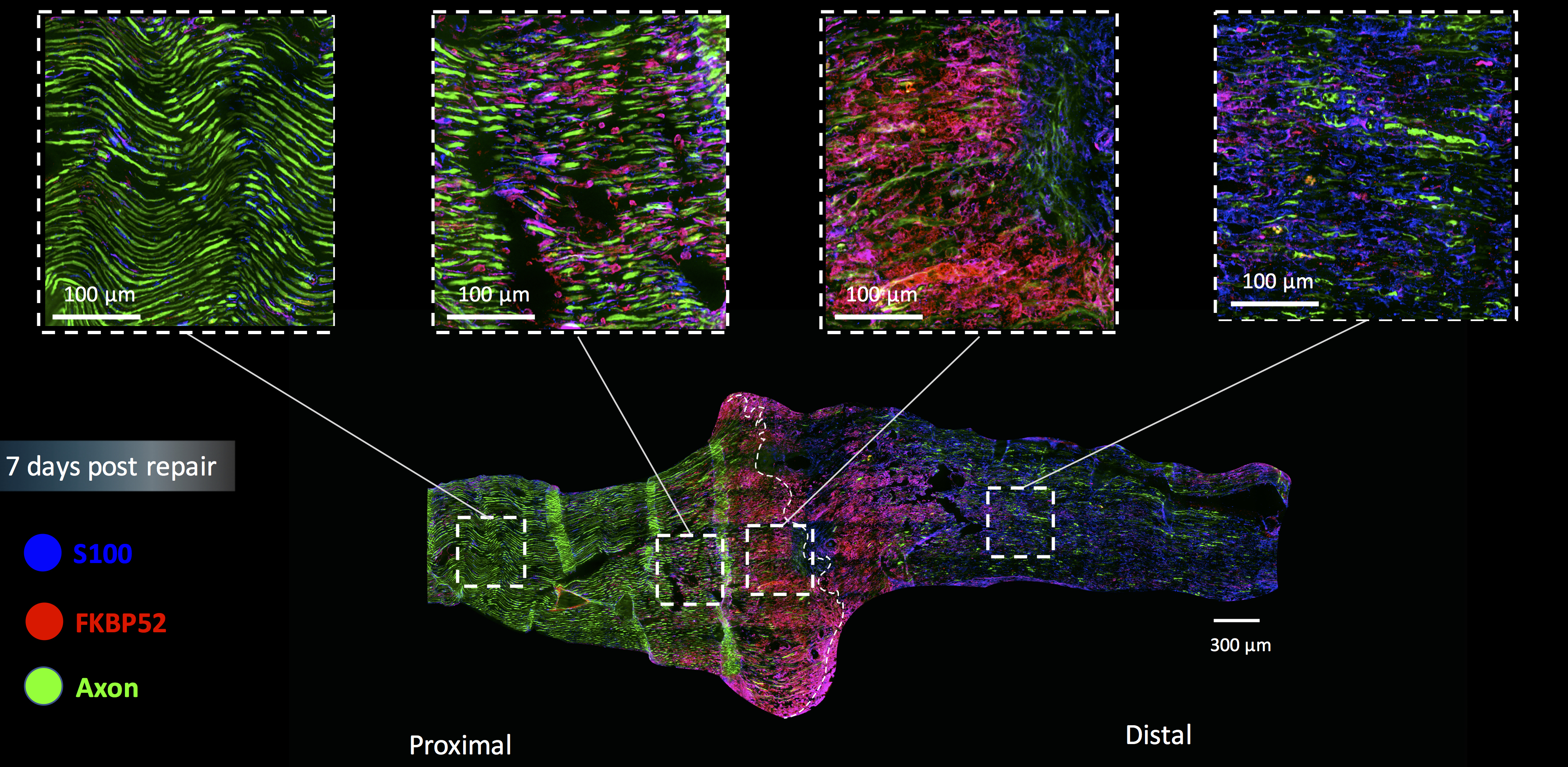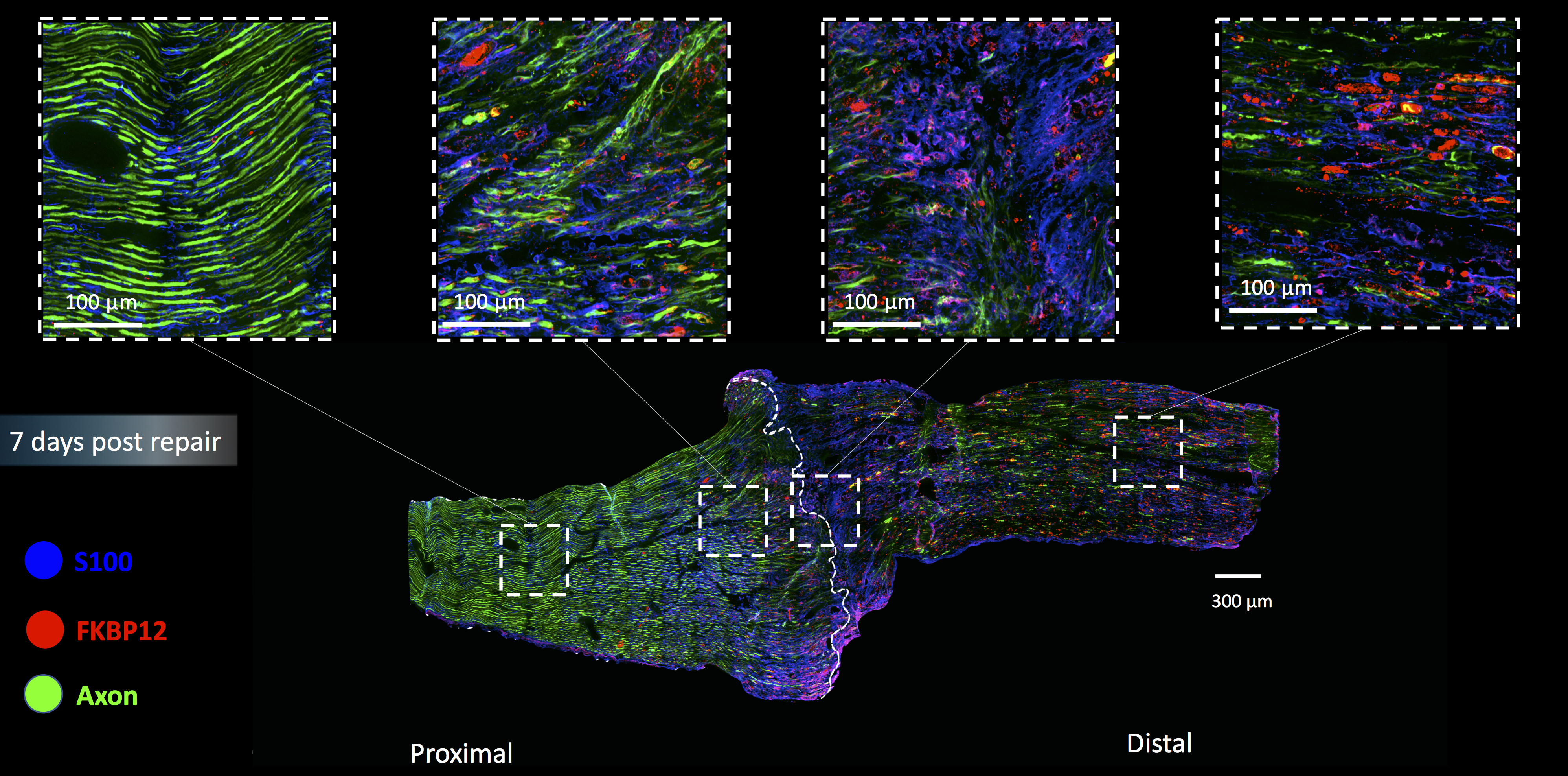FK506 Binding Protein Expression Within the Injured Peripheral Nerve
Kasra Tajdaran, MASc1,2; Jennifer J. Zhang, MD, PhD1; Tessa Gordon, PhD, DSc1; Gregory H. Borschel, MD, FAAP, FACS1,2; (1)The Hospital for Sick Children, Toronto, ON, Canada, (2)University of Toronto, Toronto, ON, Canada
Purpose: The mechanism of action of FK506 on peripheral nerve is still unknown despite the growing interest in local FK506 delivery for enhancing axon regeneration. In this study, we analyzed the expression of FK506-binding proteins (FKBPs), a family of immunophilins that act as receptors for FK506, within the injured peripheral nerve and following local FK506 administration. We investigated the expression of FKBP-12 and FKBP-52 which have been shown to mediate immunosuppressive and neurotrophic properties of FK506 within the central nervous system, respectively.
Methods: Using transgenic Thy1-GFP+ rats expressing green fluorescent protein (GFP) to visualize peripheral axons, the sciatic nerve was transected and repaired either with or without local FK506 delivery using a particulated FK506 delivery system. In a sham group, the sciatic nerve was not injured. Seven days post repair, immunostaining for FKBPs (FKBP-12 and FKBP-52), Schwann cells (SC; S100), and macrophages (ED-1) was performed to determine the localization and/or co-expression of the proteins within the longitudinal sections of injured and intact sciatic nerve.
Results: With and without FK506 local delivery, FKBP-52 was expressed in SCs in both the proximal and distal stumps adjacent to the site of sciatic nerve injury, 7 days post-repair, as seen in longitudinal nerve sections (Fig.1). FK506 delivery promoted an obvious elevation of SC proliferation in the distal nerve stump as compared to the nerves without FK506 delivery. FKBP-52 expression was minimal in the regions of the proximal and distal nerve stumps not adjacent to the injury. FKBP-12 was mainly expressed in the vacuoles of the degenerated nerve fibers in the distal nerve stump, with minimal expression in the proximal nerve and at the site of nerve injury (Fig.2). Both FKBP-12 and FKBP52 expression were not detectable within the intact nerves.
Conclusion: The mechanism of action of FK506 on peripheral nerve regeneration has not been completely characterized. Our findings suggest that FK506 acts on the Schwann cells at the site of injury, accounting, at least in part, for the profound enhancement of nerve regeneration when applied locally.
Fig.1. FKBP-52 expression within the injured peripheral nerve.
Fig.2. FKBP-12 expression within the injured peripheral nerve.
Back to 2018 Program
